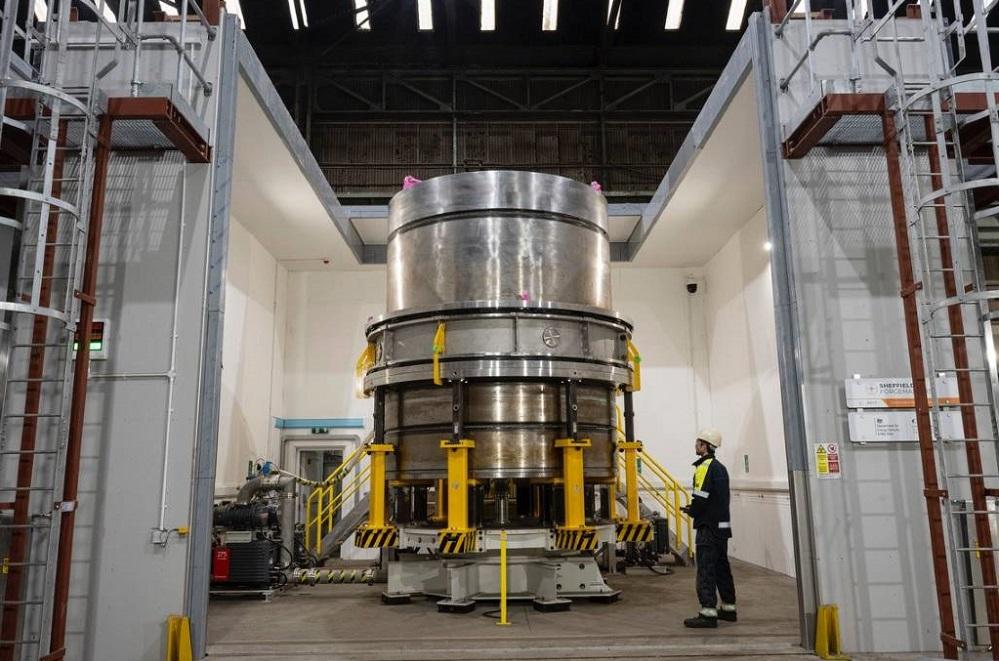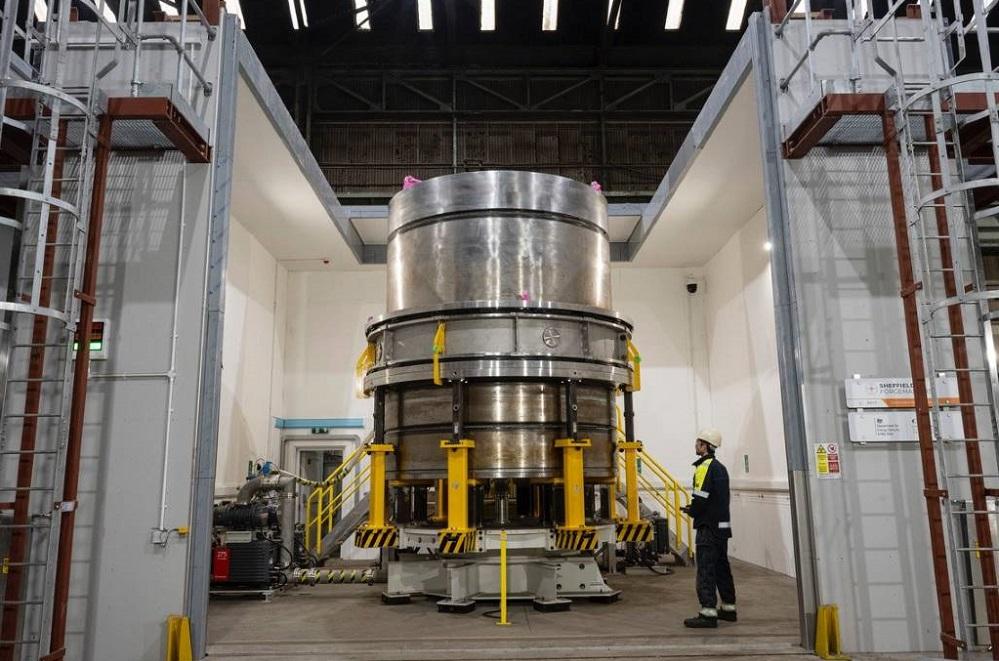
A breakthrough in electron beam welding technology has Josh Welton pondering the potential of this process in large nuclear and non-nuclear manufacturing projects.
We rarely open our browsers for breaking welding news, but here we are!
Sheffield Forgemasters, a steelmaker in England’s Yorkshire region, recently announced a “global leap in welding technology” capable of significantly reducing the time and cost of producing small nuclear reactors that are central to the UK’s energy strategy.
The successful development of local electron beam welding (LEBW) makes it possible to weld very thick steel profiles for nuclear use. Unlike Electron Beam Welding (EBW), where the entire weld must fit into a full vacuum welding chamber, LEBW only needs to cover the section being welded. And that distinction is a big deal when we’re talking about big chunks.
I’m not an EBW expert, but here are the basics. A particle gun (awesome) shoots electrons into a vacuum—where free electrons can exist—which are then accelerated by electric fields. This electron beam can generate enormous power through flow (current) and acceleration (voltage). The beam is passed through magnetic lenses that focus and shape it. Thanks to the incredible control, the beam can be adjusted to weld from a constant penetration depth from almost 0 to 200 mm. It’s about 8 inches thick! The beam is kinetic energy, and while it needs a very tight fit, it doesn’t require any additional metal. The focused beam allows deep penetration and a remarkably small width. There is no energy loss resulting in a small heat affected zone (HAZ).
Much of the funding for UK government-owned Sheffield Forgemasters to develop LEBW was provided by government programs that specifically sought to build and deploy full-scale small modular reactors (SMRs) in the UK. Instead of being built on site, the SMR is built in a factory and shipped for assembly. The aim is for these reactors to be deployed in 2030 and for them to provide 25% of the UK’s total power by 2050.
For this purpose, the addition of L for LEBW is critical. There isn’t much information yet other than a press release that contains a lot of quotes and light details, but I would guess that the most significant part of the LEBW is the ability to weld outside of a vacuum chamber with full containment.
The vacuum chamber serves several purposes. It not only allows free electrons, but is also necessary for the vaporization of the metal. The chamber takes care of the fumes and, crucially, the radiation that this process creates. EBW is nothing new, but until now you could only weld what could fit in a chamber. The SMR requires four nuclear-grade welds 8 inches thick and 10 feet in diameter. material. My guess is that much of the LEBW development focused on creating a legitimate vacuum chamber that attaches to the weld rather than swallowing it whole.
In the Sheffield Forgemasters announcement, senior development engineer and project manager Michael Blackmore said: “The impact of this technology in the nuclear industry is monumental, potentially removing expensive welding processes from the equation.
“Not only does this reduce the need for weld inspections as the weld joint replicates the parent material, but it can also dramatically speed up the deployment of SMR reactors in the UK and beyond; that’s how disruptive the LEBW breakthrough is.”
Despite the interweaving of all the tech/industry keywords, he’s not wrong, at least according to their information. These four welds usually take a year. Sheffield Forgemasters made them in 24 hours.

Sheffield Forgemasters, a steelmaker in England’s Yorkshire region, recently announced a “global leap in welding technology” capable of significantly reducing the time and cost of producing small nuclear reactors that are central to the UK’s energy strategy.
As the process continues to develop, there is the potential for major nuclear and non-nuclear concoctions. Think everything from defense to specialized structures to energy, anywhere massive welds are needed. What was once impossible or time-consuming may no longer be.
The LEBW process enables consistent welds without defects at almost any depth from 0 to 200 mm. There is no filler, so the weld metal will be the same as the parent material. From thin to thick, if it works, as Sheffield claims, it will be a “disruptive game changer” in the manufacturing industry.

